A firm favourite at the Field Studies Council, for all ages and in most seasons, is a pond dipping session!
Pond dipping is a fun and interactive activity to discover the wonders that lurk beneath the pond’s surface, in a watery world rarely seen. This is a fantastic introduction to hands-on outdoor education for children and adults alike, who are always fascinated to find a seemingly quiet pond is actually teaming with life when you take a closer look!
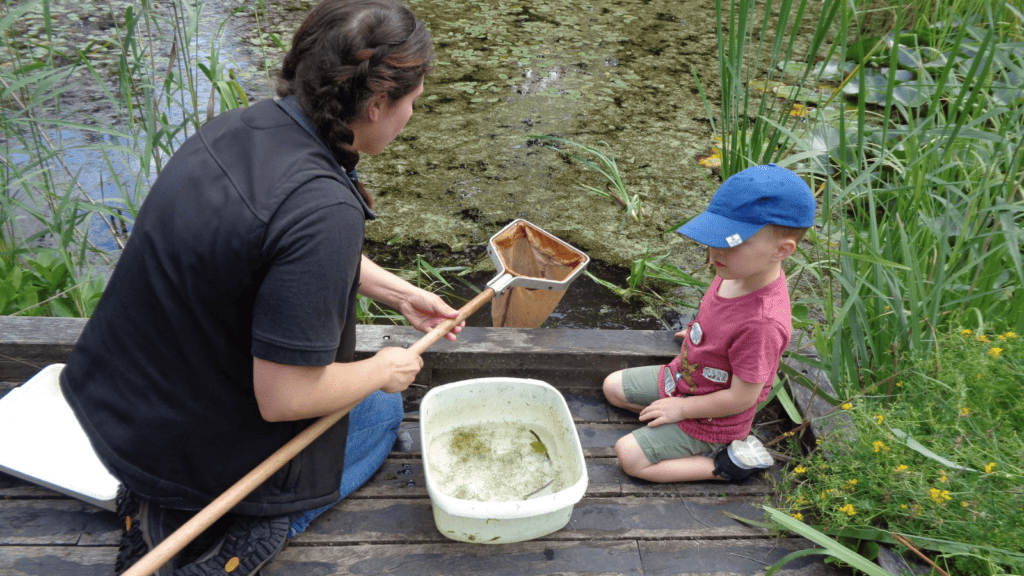
What you need to go pond dipping
Having the basic equipment at hand will make your pond dipping more fun and also mean you get the most out of your outdoor activity.
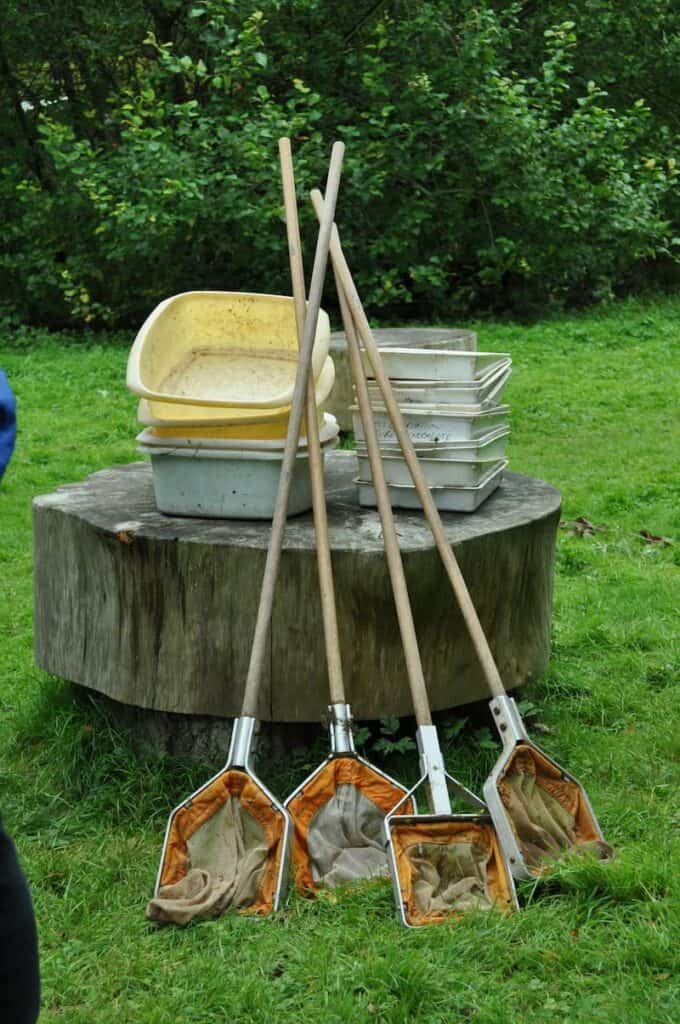
Pond Dipping Kit
- A net
- A bucket
- A tray
- A spoon
- An identification guide
- Paper and pencil
Where to go pond dipping
If you, a friend or family member have a pond in your garden then it’s a great place to start. The warmer months will give a more productive result, but you can still find plenty of life when most of nature seems to be taking a rest. There are often designated pond dipping areas at your local nature reserve, so check on line or contact them and enquire if you can take a trip with your net. Remember to always have permission before starting your pond dipping session, and only continue with the activity if there is an adult to observe and the chosen spot is safe to do so.
How to do pond dipping
Though the objective of this exercise is to find out what is in the pond under the water, don’t forget about the wildlife that lives around the outside of the pond, or uses the pond as its water source. I’ve learnt to always approach the pond at our Preston Montford location quietly – as I am then often rewarded with sighting a heron! Also, any vibrations from stomping feet will warn inhabitants of your approach – so arrive as quietly as you can.
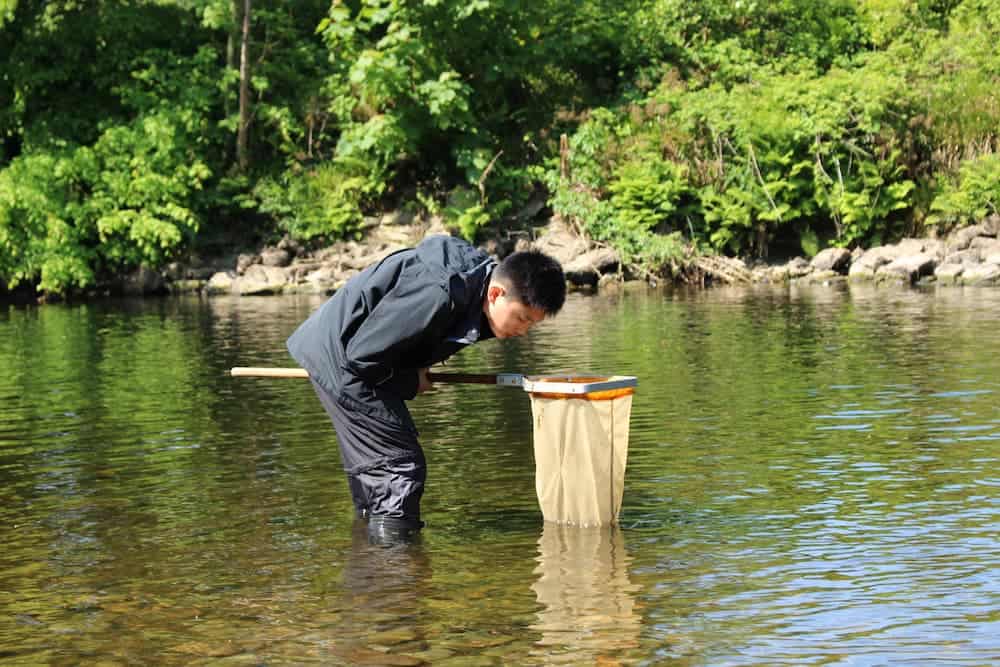
At this time of year, you are likely to see dragonflies and damselflies darting through the greenery, but in March you may see tadpoles and in April keep your eyes open for frogs!
- First half fill your bucket with water.
- Then, starting with a clean net, gently submerge the net into the water, and slowly swoop it around in a figure of eight.
- Raise the net out of the pond in a scooping motion, and slowly make your way to your bucket.
- Empty the contents of your net into the bucket by carefully turning the net inside out into the water, and swishing off any bits that are clinging to the inside.
- Now to get spotting!
- Slowly pour some of your water into your shallow tray.
- Use your spoon to carefully scoop up any moving creatures to get a closer look.
- Use your paper and pencil to make a drawing of the creature, or use your ID guide to make your identification and write this down.
- Remember to put back all creatures and water, and wash your equipment before using again.
What you might find pond dipping
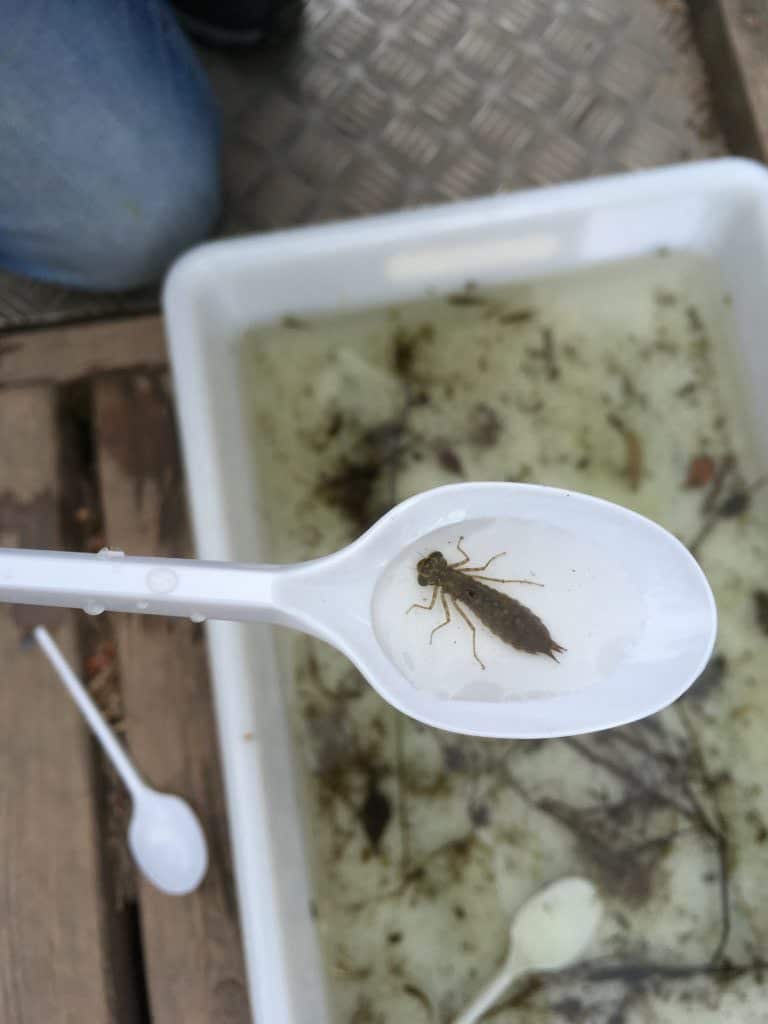
There are so many creatures you may find in your pond, depending on the size, depth, health and location. If it’s a garden pond it may be a good idea to avoid the goldfish, otherwise you might come across:
- Animals with no legs – for example, hydra, worms, or leeches.
- Animals with jointed legs – crustaceans such as crayfish or shrimps, water mites, or water spiders. You may spot land spiders skating on the water’s surface.
- Insects that have nymphs – these are small wingless insects that hop on the surface of the water and include springtails, mayflies, and stoneflies.
- Insects that have larvae – you may find caddis flies, flies, or beetles. (The diving beetle is a carnivorous beetle others but may eat algae or detritus).
To help you with identification, Field Studies Council provide an easy to follow guide ‘the freshwater name trail’ which is also included in our class bundle.
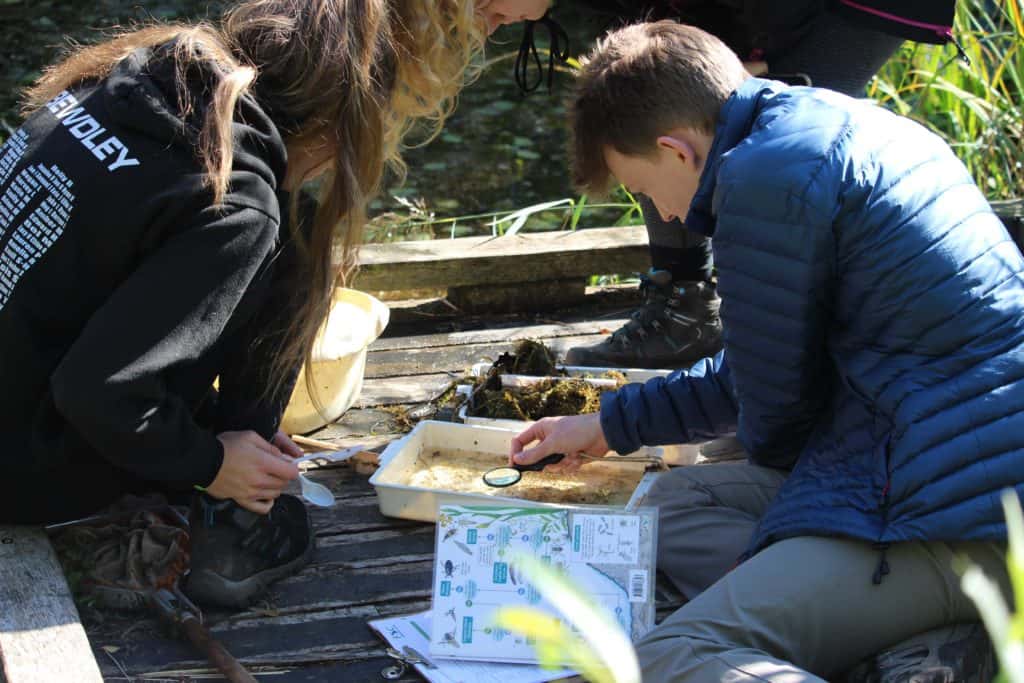
Many of our school courses include a pond dipping session, increasing interaction with nature and introducing practical science activities at primary age, to covering aspects of biology fieldwork courses at GCSE and A level.
It just goes to show you are never too old to go pond dipping!
Whatever age you are, and whatever you find, remember to stay safe and have fun.
